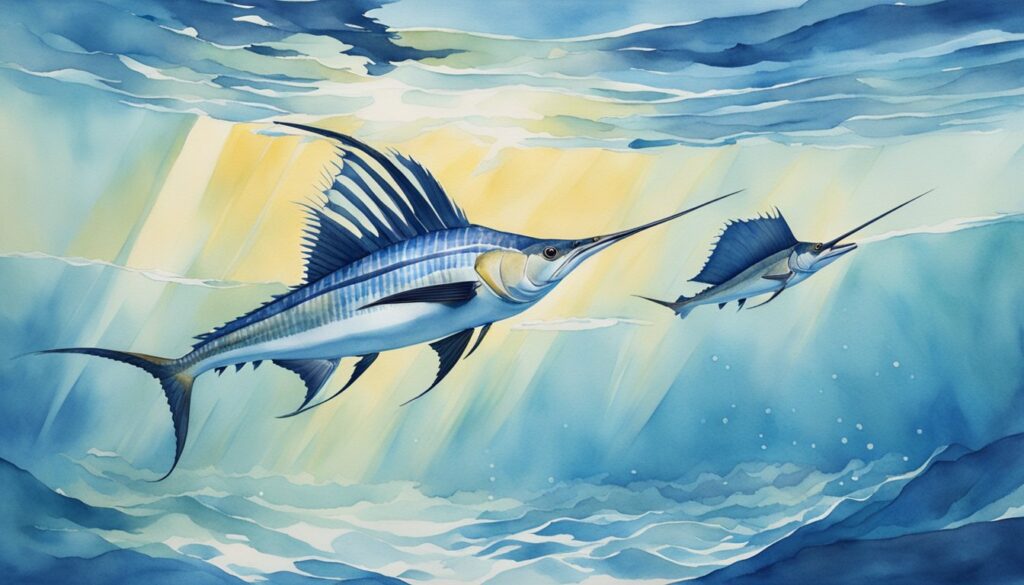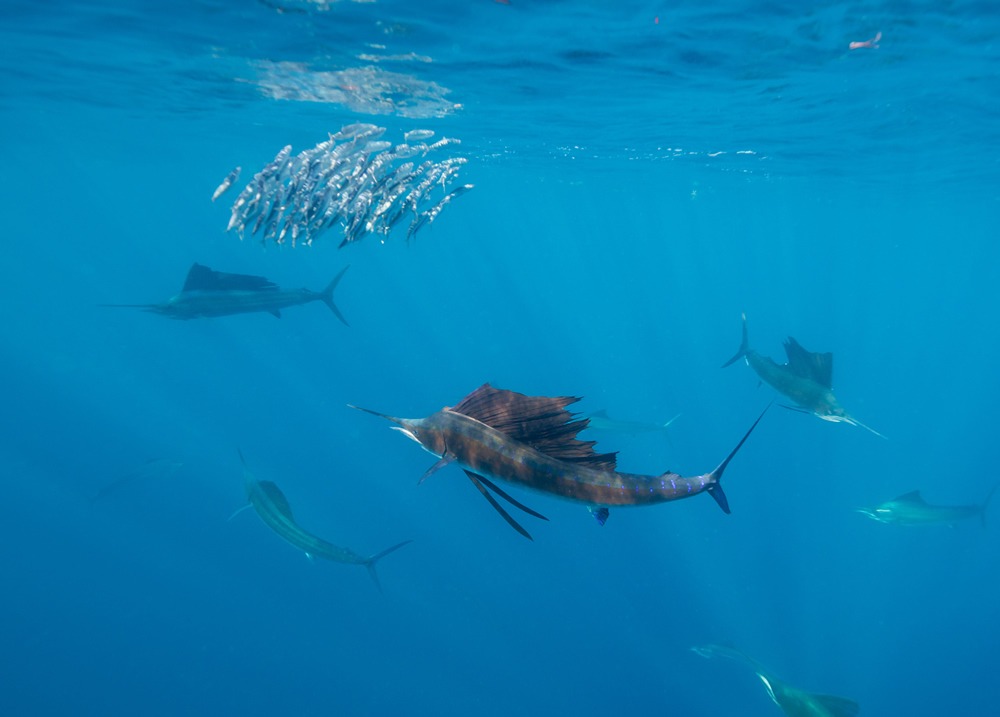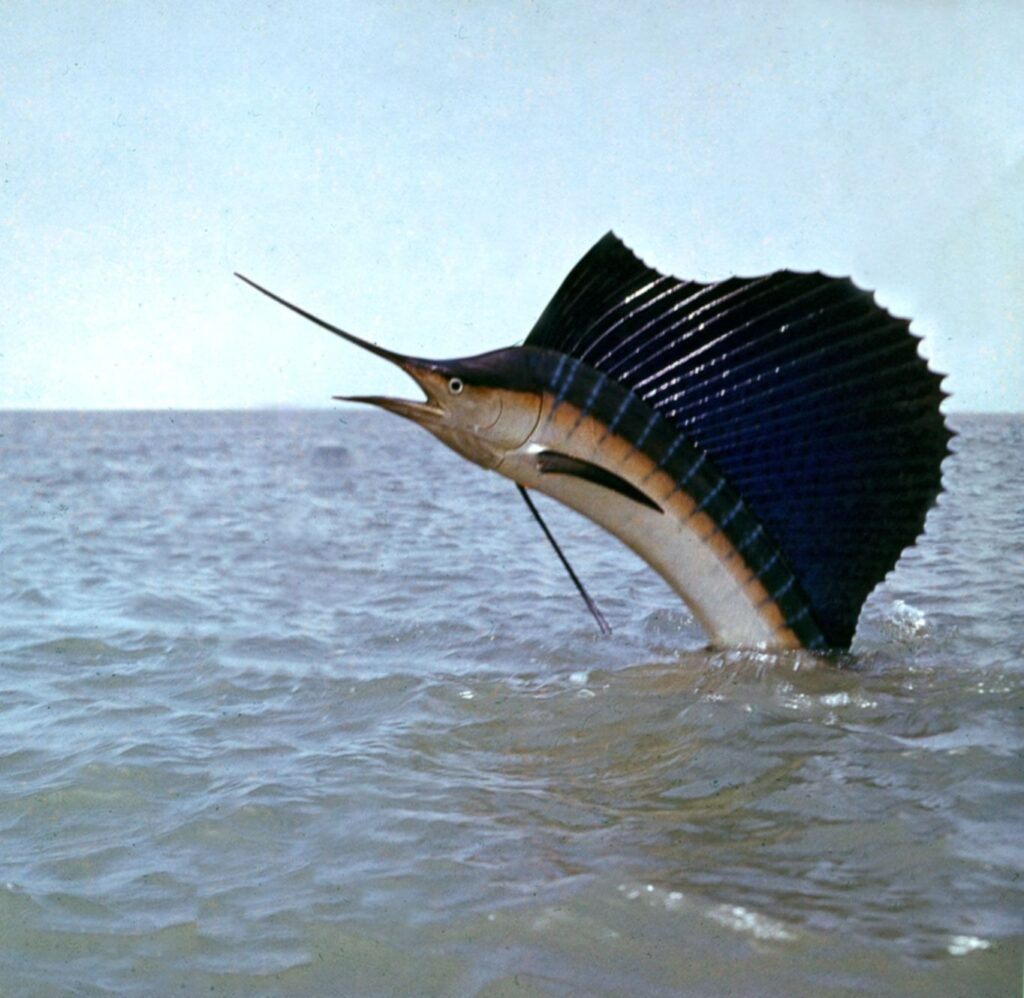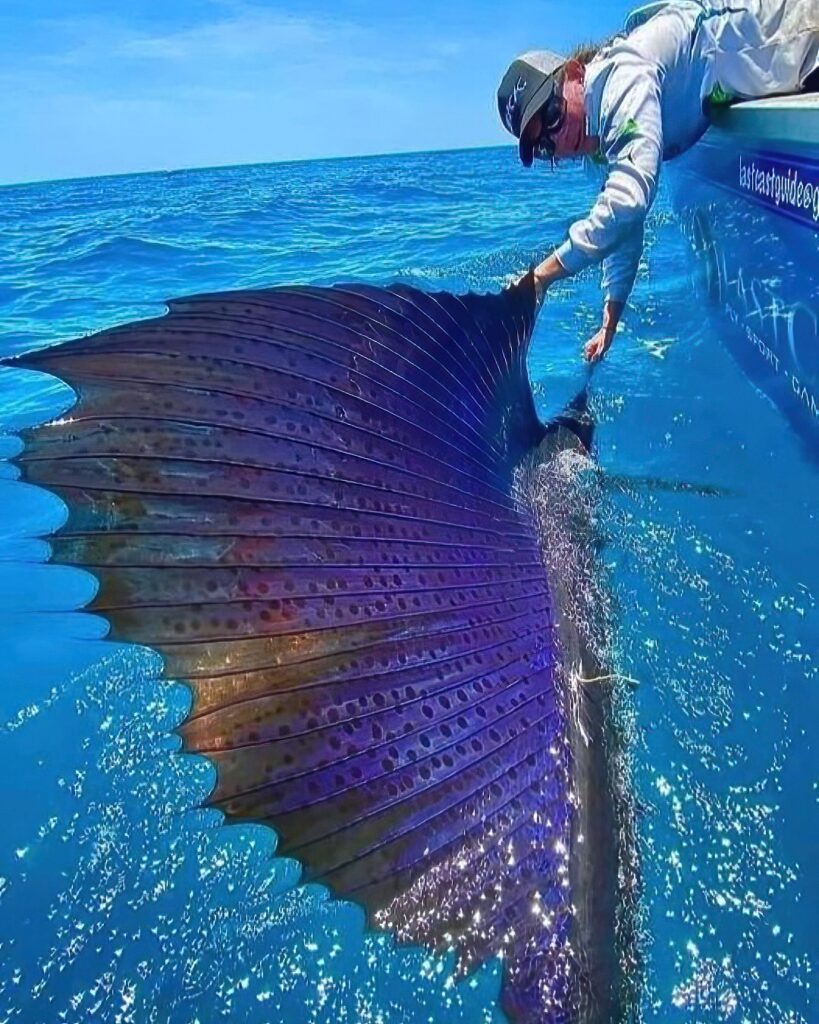
Sailfish, with their sleek, torpedo-shaped bodies, are the undisputed champions of ocean speed. They can propel themselves through the water at an astonishing 70 miles per hour (112 kilometers per hour), leaving other marine animals in their dust. This incredible speed makes them perfectly adapted to their predatory lifestyle.

These magnificent fish favor the colder pelagic waters, those far from the shore and typically deeper in the ocean. They can be found in all of Earth’s oceans, a testament to their adaptability. Their bodies are typically a beautiful blue or gray, providing excellent camouflage in the open water. However, the most striking feature of the sailfish is undoubtedly its namesake dorsal fin, the “sail.” This massive fin can extend nearly the entire length of the sailfish’s back and plays a crucial role in its high-speed maneuvers.

While the exact function of the sail is still being debated by scientists, it’s believed to serve several purposes. One theory suggests it acts like a keel on a boat, providing stability during these bursts of speed. Another theory proposes that the sail helps with sharp turns by acting like a rudder. It may even function as a display fin, used for communication with other sailfish.

Beyond its impressive speed, the sailfish boasts another remarkable adaptation for hunting: its long, sharp bill. This bill resembles a sword and is used to slash and stun prey before the sailfish swoops in for the kill. Sailfish are known to use their impressive speed in conjunction with this bill to herd schools of smaller fish, making them easier targets.


Despite their impressive hunting prowess, sailfish are unfortunately facing threats. Overfishing and habitat loss are putting pressure on their populations. Thankfully, conservation efforts are underway to ensure these magnificent speed demons of the sea continue to grace the oceans for generations to come.

Leave a Reply